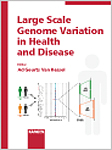Until recently variation in the human genome was thought to be
restricted mainly to so-called single nucleotide polymorphisms.
However, it has become clear that large scale DNA copy number
variations (CNVs) are much more common than initially expected. It is
widely assumed now, and has been shown in some cases, that (cryptic)
CNVs may be associated with diseases such as congenital malformation,
neurocognitive and/or mental retardation syndromes as well as several
malignant disorders.
This special issue discusses these newly identified large scale
genome variations as to whether they may act as harmless bystanders
or not. It also suggests how to employ this novel information for the
delineation of genotype-phenotype associations, disease gene
identification and, ultimately, clinical practice including
diagnosis, prognosis and treatment.
Investigators in clinical genetics, pathology, oncology and genomics
will find this book to be a valuable source of current knowledge.


